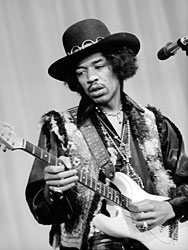Guitar
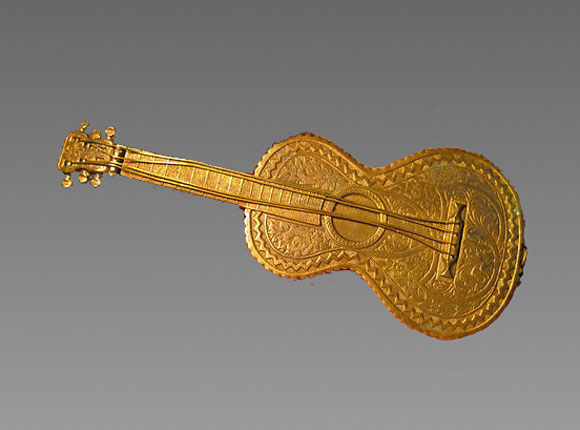
Needle Case (photographs from eBay)
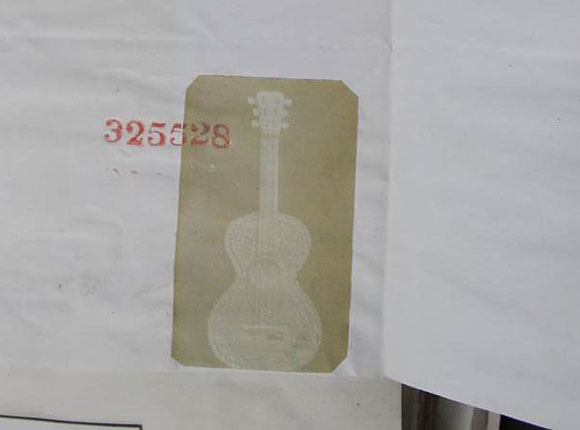
Design Representation
Design Details
Needle Case Type: |
Figural |
Patent/Registered to: |
W. Avery & Son - Redditch |
Patent/Design Representation #: |
Ornamental Class1: Metal: #325528 |
Patent/Design Registration Date: |
August 30, 1878 |
Location of Patent/Design Registration: |
The National Archives (TNA) - Kew, UK |
Reference #: |
TNA Representation - BT 43/44/325528
TNA Register - BT 44/4/325528 |
Dimensions: |
12 x 5 |
Material: |
Brass |
Name Variations: |
a) W. Avery & Son - Redditch
b) Baggallays, Westall & Spence - London |
Other Variations: |
None |
Additional Photographs
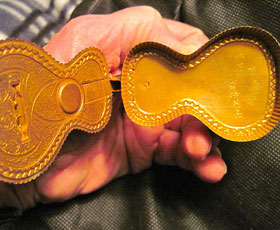
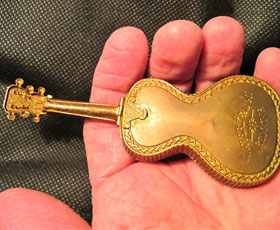
Interior and back views
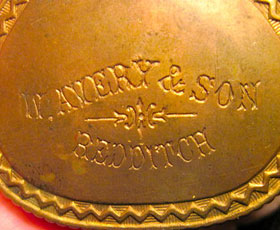
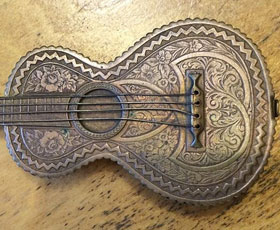
Back detail with Avery signature and front detail
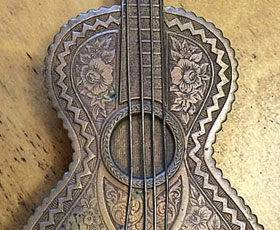
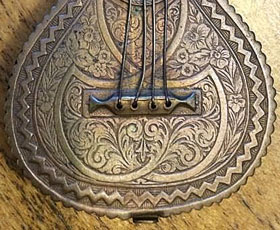
Front details
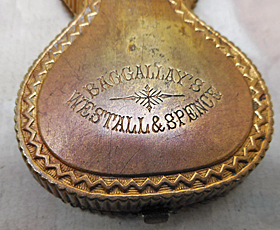
Back with Baggallays signature (photo from the Curio Cabinet Antiques website)
Facts
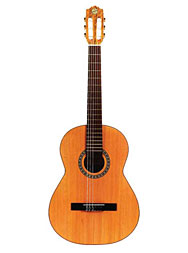
The guitar is a musical instrument with a flat rounded body and long neck containing six to twelve strings that create sound by being
plucked. Guitars come in several different varieties such as the acoustic guitar above or the electric guitar below which was
introduced in the 1930’s. The lute is similar to a guitar except the body is pear-shaped.
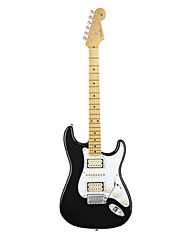
History
Musical instruments that make sound by vibrating strings on a wooden board or base have been around since ancient times. The
history of the guitar began in Spain during the Medieval Period whereas the lute was more common in other areas of Europe. By the
mid-16th century the Spanish guitar had evolved into the classical guitar one sees today. During the Victorian Era well-bred
middle and upper class woman were only allowed to play the piano, harp or guitar due to the period’s rigid social rules.
Below: Detail of a painting by the Italian painter Caravaggio (1571-1610) entitled "The Lute Player". Click on the picture to see
the entire painting.
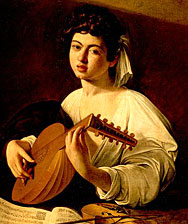
Miscellaneous
Jimi Hendrix was an American musician and songwriter who many consider to be the world’s greatest guitarist. He started playing
when he was 15 years old, and by age 22 was a backup musician for the Isley Brothers and Little Richard. He moved to London in 1966
where he met other prominent guitarists and achieved success not only for his musicality but also for his stage performance, often playing
the guitar with his teeth and setting his guitar on fire at the end of his performance. After returning to the USA he became extremely
popular and was the headline musician at the Woodstock music festival in 1969. His rendition of the Star Spangled Banner became the
anthem of the sixties generation. Click on the photo below to listen to it. Be sure to turn on your speakers.
